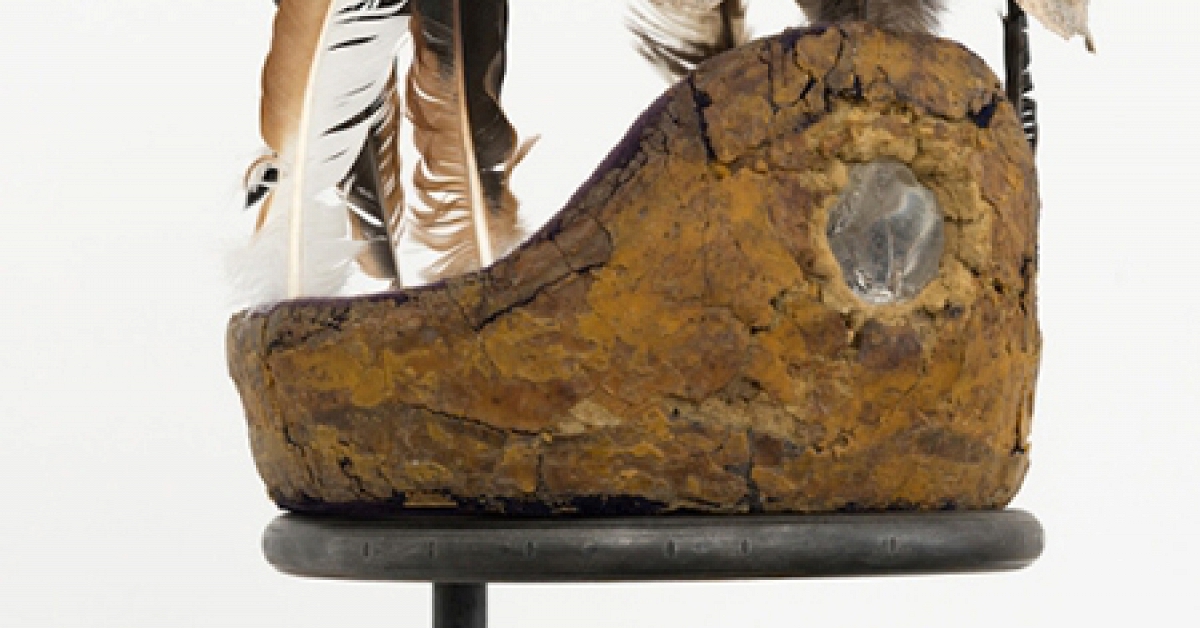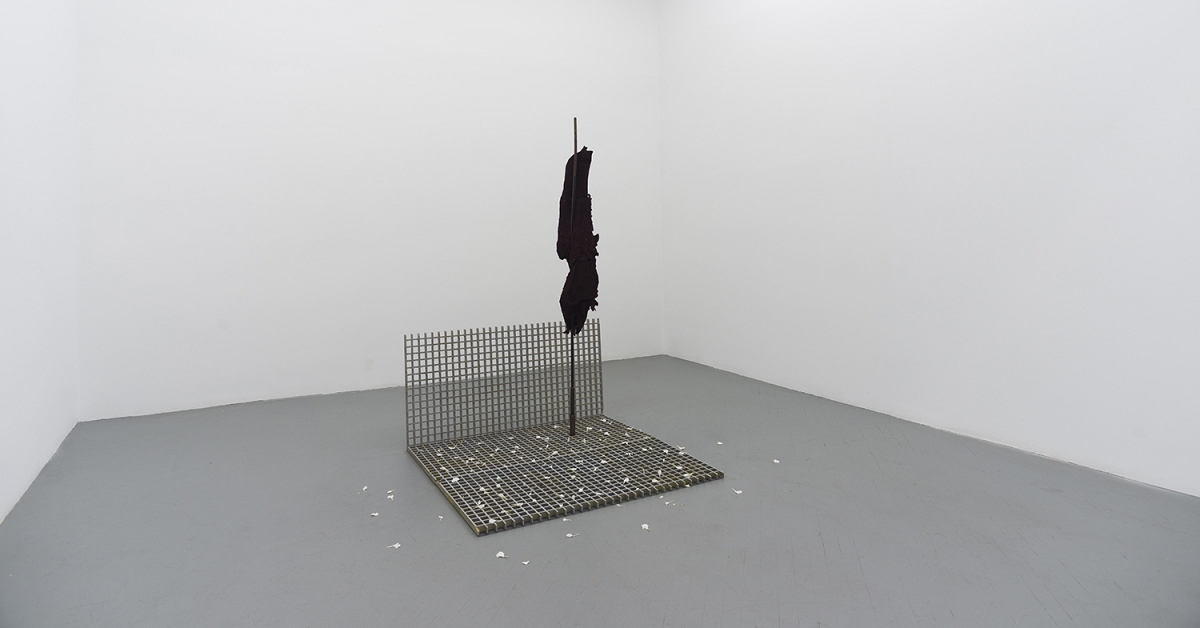This artist’s work on display in Davidson explores notions of identity and place
Charlotte Observer / Sep 18, 2019 / by Grace Cote / Go to Original
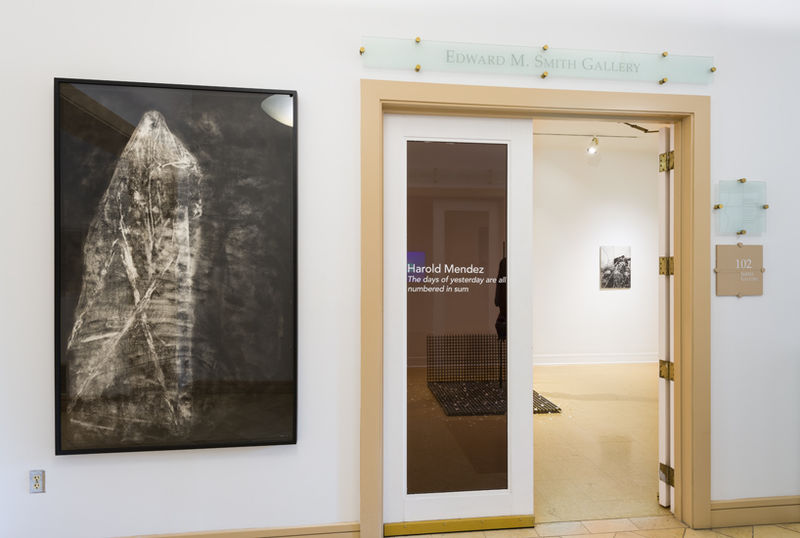
Coconut, lime Kool-Aid, carnation petals and a turtle shell. These are a sampling of the materials used in Harold Mendez’s solo exhibition “The days of yesterday are all numbered in sum” at Davidson College Art Galleries.
Made with nontraditional materials, Mendez’s work is conceptual but not inaccessible. Of the eight works on view through Oct. 6, three are photography-based and five are sculptures.
Based in Los Angeles, Mendez exhibits his work nationally. This solo exhibition is one of three this month, the others are in Houston and Chicago.
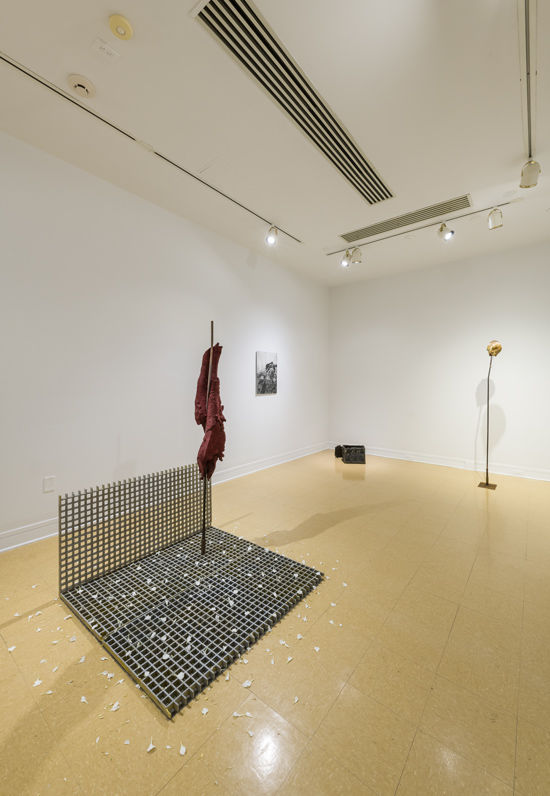
The Davidson exhibition is about an artist determined to find the right materials and compose them in the right way to say what he needs to say.
Look closely
This exhibition, curated by Lia Newman of Davidson College Art Galleries, has no wall labels but does have a catalogue with all of the works’ titles, which are long, specific fragments whose relationship to the work is not obvious. Mendez said his titles carry the same importance as his materials and he considers them an equal contributor to the artwork.
The works on view “tend to represent the body in a fragmented way,” he said.
Visitors should look closely to find a head in the shape of a coconut (“I did not become someone different / That I did not want to be”) and sections of wood with roots whose form echoes a heart and its arteries (“American Pictures” and “but I sound better since you cut my throat”).
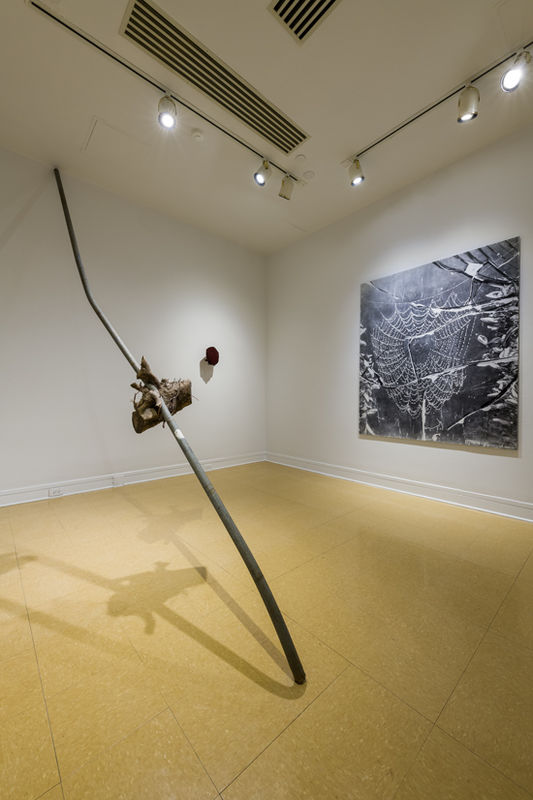
In the 2018 work “Body,” which is a turtle shell coated in powdered cochineal, Mendez has covered a body in another body. Europeans used cochineal, (an insect native to Latin America) exploitatively before Latin America gained independence so it carries connotations to sociopolitical issues that still echo today.
That particular material exemplifies Mendez’s use of emotionally charged symbols with an association to something bigger, historical and ultimately relevant.
“I’m really interested in materials and finding objects that have a history to them but I’m able to re-ascribe a new meaning to them or use them in a different way,” he said.
Symbolic materials
In “American Pictures,” a large industrial work mat sits on the floor and a separate portion stands vertically along the back edge of the mat. A wrought iron rod stands in the back right corner impaling a large piece of charred wood that has been coated in cochineal.
All over the mat and in the area surrounding it are white carnation petals. According to the artist, these are a symbol of mourning in Latin America.
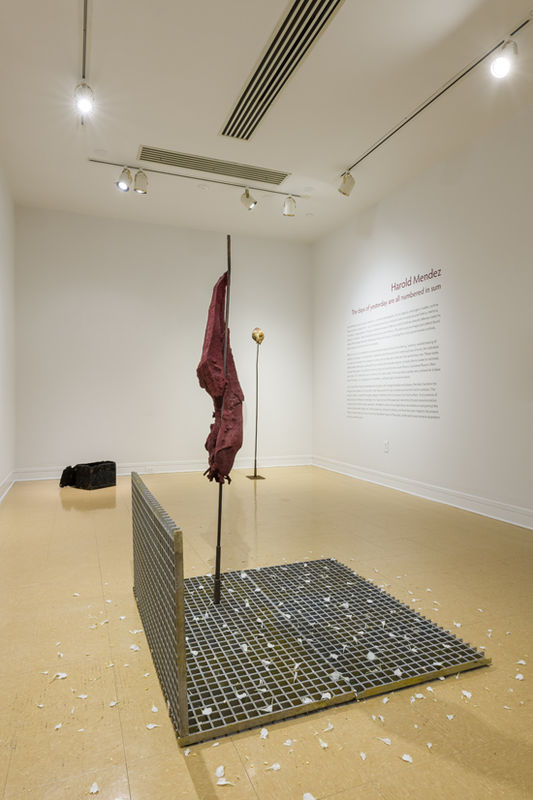
Mendez says this work came out of a “place of anxiety and a sense of constant mourning.”
The work requires that the carnation petals be replenished by a gallery attendant. “We have to take care of this object,” Newman said. “Every few days, we have to scatter more flowers. Although this feels more ceremonial or ritualistic, it reminds us of the obligation museums and galleries have to tend to works of art.”
Capturing divides
The title for “but I sound better since you cut my throat” comes from a poem by Fred Moten, an important scholarly figure whose work deals with race and sociopolitical divides.
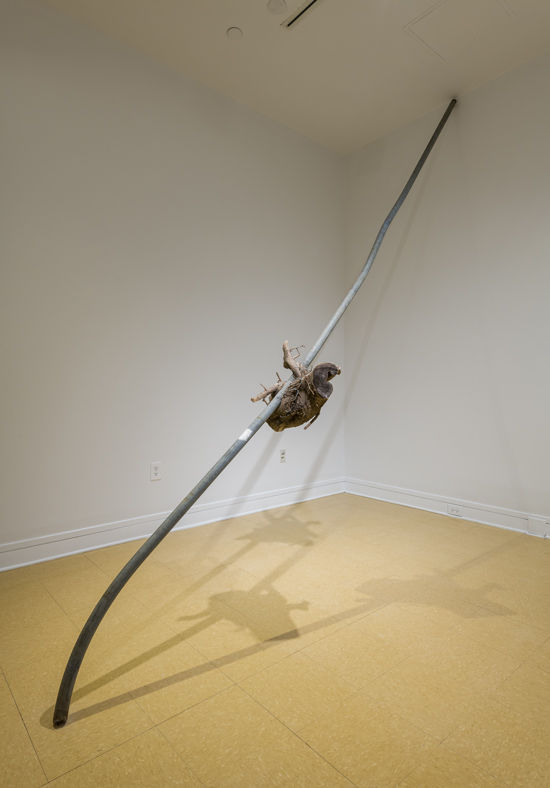
The work is a 16-foot pole whose ends reach from the floor up to the corner where wall and ceiling meet. In the middle is a piece of wood that had wrapped itself around and grown through the fence. Pieces of the chain link where Mendez made cuts protrude from the organic wood segment.
The artist was driving around an industrial section of Houston, where he was living at the time, when he first spotted this meeting of man-made and natural materials. He saw it as a stunning example of nature overtaking what man had intended to be a barrier.
Inviting viewers in
The 2016 work “At night we walk in circles” appears to be a large photograph, but closer inspection reveals ample texture and artist manipulation. The media list includes cotton, enamel spray paint, watercolor, toner, graphite and litho crayon on ball-grained aluminum lithographic plate mounted on Dibond sheet.
According to Newman, Mendez had been in possession of this glass negative for a while before someone in his studio accidentally broke it, which is when he was inspired to use it.
Continuing with the theme of the body, it is as if the image of the beautiful dew-dropped spider web is inviting the viewer into its sticky trap. The viewer becomes the body the work needs — the prey to be caught in the web — thereby completing the work.
Contrasting exhibits
Mendez earned an MFA from the University of Illinois-Chicago, the city where he was raised by his Colombian and Mexican parents. A few of his works were on view in the Whitney Biennial in 2017, including “American Pictures,” which is the centerpiece of this exhibition.
Newman sourced the eight works on view from private collections. The exhibition is in the smaller Smith Gallery at Davidson, across from the larger Van Every Gallery where “The Speed of Thinking” features the works of faculty members Joelle Dietrick and Owen Mundy.
The analog, found-object and hands-on nature of Mendez’s work shines in opposition to “The Speed of Thinking,” which is all digital work. “That opposition was interesting to me,” Newman said, “as a small institution in a small town, we want to show diversity of what artists are doing.”




